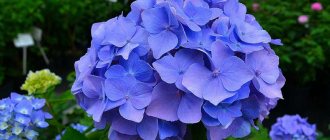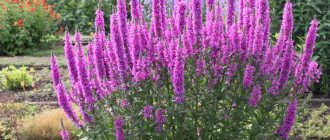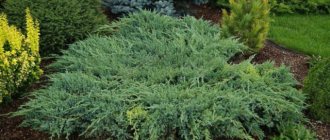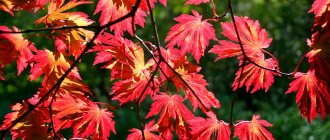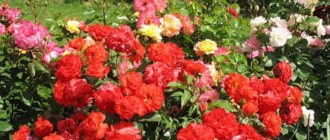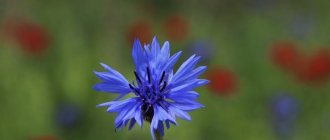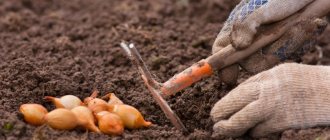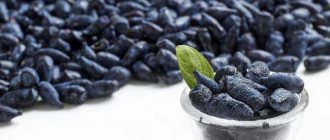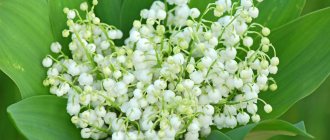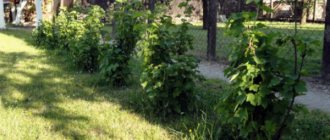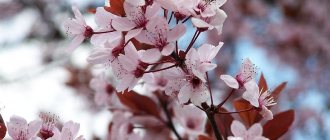Colorful symbols of summer, reverent, tender, and at the same time so hardy, decorative poppies do not leave anyone indifferent. The inimitable colors and structural details of these amazing flowers are an invariable decoration of any summer garden. But growing decorative poppies is not a completely standard task, although it is not difficult. Poppies are propagated by seeds, and the available choice of sowing methods and methods allows everyone to find their own ideal option.
Alpine poppy (Papaver alpinum). © HermannSchachner
The reputation of cultivated, ornamental poppies has suffered significantly from confusion and their association with a species whose cultivation is punishable by law - the soporific poppy. The most beautiful ornamental poppy, the oriental poppy, which, if it can be grown, is limited to a few copies, as well as several other species, also suffered from the legislative ban. But other types of poppies, which have nothing to do with opiates and do not contain narcotic substances - beautifully flowering annuals, biennials and perennials - for some reason also remain a banned plant for many. And although there are no fewer admirers of the beauty of poppies, they are still significantly inferior in their distribution to other summer-blooming competitors.
Note! According to the current legislation of the Russian Federation, the cultivation of the following types of poppies is prohibited: soporific, oriental, bristlecone, bract.
Description of poppy
Members of the genus Poppy (Papaver) are herbaceous perennials, biennials and annuals with very powerful taproots, strong, straight single shoots, and amazing heavily haired carved greenery, famous for its filigree silver-blue texture. Alternately arranged, pinnately dissected, almost prickly to the touch due to the edge, the leaves can reach 30 cm in length.
The poppy blossom is a fascinating sight. Drooping buds, straightening peduncles as they bloom and spectacular large saucer flowers with the most beautiful stamens among garden plants are mesmerizing. The calyx of the flower consists of two large sepals, and the corolla is easily recognized by its delicate, almost transparent, tremulous four large petals surrounding a delightful “powdered” center of anthers and stamens, usually almost black in color.
Red, yellow, pink, orange, violet and even blue - decorative poppies boast amazingly beautiful shades that inspired legendary painters and today cause only admiration. After flowering, fruit boxes with beautiful discs at the top, filled with small rounded seeds of different shades of gray, are set.
Without exception, all poppies are propagated by seeds. And annuals - peony poppy, tangled poppy or changeable poppy are now classified as self-seeded poppy, glaucous poppy, bare-stemmed poppy or saffron poppy, peacock poppy; and more durable poppies - Alpine poppy, Amur poppy, Atlantic poppy, Burcera poppy, Lapland poppy, Miyabe poppy, polar or Scandinavian poppy, grayish or Tien Shan poppy, Tatra poppy - are best propagated by seeds. Some vegetative methods are also used only for perennial species. Growing poppies from seeds is very easy, as the plant often blooms within two months of germination.
Terry and peony poppy. © thompson-morgan
Description and characteristics of the plant
Poppy is a well-known herbal and, unfortunately, much of its fame is due to its intoxicating, narcotic properties. Although, in addition to this, it has both medicinal and aesthetic properties. It belongs to the Poppy family, which has more than a hundred species. These are mostly unpretentious survivalists who prefer to live in arid deserts, steppes or in rocks on mountain slopes.
The birthplace of the flower is considered to be Australia, Asia, Southern and Northern Europe. But, since it is unpretentious and is able to survive in a wide variety of climates, it is industrially grown for the preparation of sleeping pills in Afghanistan, India, China, Asia Minor and Central Asia.
Gardeners prefer to grow ornamental poppy varieties for their simplicity and bright, colorful blooms.
Strategies for growing poppies from seeds
Poppies are one of those herbaceous plants that respond very poorly to transplantation. If possible, they should always be sown directly at the growing site. Poppies are grown very rarely from seedlings, usually only when the plants are going to be used as potted or container accents.
Conditions for growing poppies
Poppies, regardless of type, are light-loving plants, but perennial species can withstand light shading. Poppies, in theory, are not afraid of even windy areas, but if you do not protect the plant from drafts, its beautiful flowers will quickly fall off. By choosing secluded, warm, protected areas, you will prolong the pleasure of watching the magnificent poppies bloom. The soil for poppies can be chosen from any of the cultivated and non-damp soils, but the best flowering is always observed on nutritious soil. There is a place for poppies in mixed gardens, flower beds, rock gardens or rock gardens, and on the lawn.
When choosing a place for poppies in your garden, it is worth remembering that the flowering of this plant is very short: within a month after its start, the fruits ripen, and then the plant quickly leaves the garden scene. Even the best perennial poppies have a growing season limited to an average of 100 days. Therefore, poppies need to be planted so that neighboring plants can disguise the unattractive fading and then disappearing greenery, or provide for the planting of other seasonal annual stars in place of poppies. The best partners for perennial poppies are delphiniums, cereals, cornflowers, yarrow, asters, speedwells, oregano and cornflowers.
Hollow poppy (Papaver nudicaule). © 99roots
Pests and diseases
Poppies can suffer from powdery mildew. Signs of the disease are a white coating on the leaves, which turns brown and darken over time, the spots merge and completely cover the entire surface of the leaf plate. The flower grows worse, and if damaged significantly, it may die.
Poppy bacteriosis manifests itself as greenish-brown spots on the leaves, which grow and spread to the seed pods.
Parts of the plant infected with these diseases are torn off and destroyed. For treatment, spray with copper oxychloride (40 g of the drug per 10 liters of water), Bordeaux mixture, Topaz or Maxim. To prevent diseases in the fall, burn all plant residues, do not plant poppies in shady places, use healthy seed material and avoid waterlogging.
Growing perennial and biennial poppies
Sowing seeds of perennial and biennial poppies is similar and not complicated. These poppies are grown:
- sowing in early spring;
- sowing before winter.
The latter option is considered preferable, since the plants are stronger and more powerful, develop better and bloom earlier. When sowing in spring, young plants will need more careful care, because while the seedlings are getting stronger, they will already face heat and drought and will not be able to develop normally without watering.
Perennial or biennial poppies can be sown in seedling beds, diving after the appearance of the first or second true leaf to a permanent place, but it is better to sow them immediately at the place of cultivation.
During pre-winter planting, the sowing of poppies is delayed until the last minute so that the seeds, which germinate quickly enough even in cold soil, do not wake up before the beginning of winter. Even a soil temperature of 3-5 degrees is not suitable: poppy is sown when the soil has time to freeze in the top layer, that is, most often in November.
In the spring, planting is carried out when the weather permits, the snow has melted and the soil has at least slightly thawed.
The technique for sowing poppy seeds remains the same regardless of the timing of their sowing:
- The soil is prepared in advance or before planting by digging and loosening the soil. When cultivating the soil, it is necessary to remove weed rhizomes, apply organic fertilizers and a complete mineral mixture (about 10 kg of organic matter, compost or humus and 40-50 g of mineral fertilizers per square meter of soil).
- At the sowing site in the fall, shallow grooves or rows are carefully created, only up to 2–3 cm deep. Spring sowing can be carried out both in furrows and superficially.
- Poppy seeds are placed at a considerable distance from each other (from 5 to 20 cm) so that the plants do not need to be thinned.
- The winter crops are covered with soil from above, making sure that they do not go too deep. When sowing in spring, the seeds are not covered or covered with a light layer of soil or film to speed up germination and the procedure is completed with watering.
- After spring sowing, you need to maintain stable soil moisture for 2 weeks and make sure to remove the film immediately when seedlings appear.
Seeds sown in the fall will germinate in the spring, as soon as the soil warms up to 3-5 degrees; spring sowing can be expected in 10-20 days. Even young plants are frost-resistant, but if frost exceeds 5 degrees below zero, then it is better to additionally protect spring crops with non-woven materials.
If sowing was carried out densely, then the seedlings are thinned out twice - first at a distance of 10 cm between plants, and then at a distance of 20 cm.
Perennial poppy seedlings. © directplant
How to care for a plant?
Caring for a planted plant, in principle, is not so difficult. The procedure consists of timely watering and fertilizing. It is also necessary to ensure that the crop is not attacked by pests and does not suffer from any disease. Let's take a closer look at poppy care.
Watering and fertilizing
Watering is carried out only when the weather is dry outside for a long period of time. After moistening, the soil must be loosened so that a crust does not appear on the surface. In addition, it is necessary to regularly get rid of weeds.
If you cover the area with poppies with mulch, then watering, loosening and weeding will occur much less frequently.
As for fertilizing, the plant does not particularly need it. However, if you fertilize, nothing bad will happen.
It is also sometimes necessary to carry out preventive measures for poppy crops against diseases and insect pests. Although, in principle, the plant is rarely exposed to diseases.
Diseases and pests
The poppy plant can become sick if it grows in uncomfortable weather conditions. The most common diseases are fusarium, powdery mildew, alternaria and downy mildew.
Fusarium is a fungal infection. After infection, the stem and leaves of the crop become covered with dark spots. The poppy begins to fade, the bolls develop poorly, begin to deform, wrinkle and turn brown. This disease affects the vascular system of the culture. The plant cannot be cured. You will have to get rid of infected flowers, and the area where the plants grew needs to be sprayed with a fungicidal solution.
Powdery mildew is a fungal disease that covers poppy foliage with a white, cobwebby coating that quickly resolves. However, in its place, fruit fungal bodies are formed in the form of small brown and black grains. The disease severely affects the plant, as a result of which the quality and volume of the harvest decreases. If an infection is detected, the culture should be immediately treated with a solution of copper oxychloride (you will need to dilute 40 grams of the substance in 10 liters of water) or with a soda solution (stir 50 grams of soda in a bucket of water). You can also use garlic infusion or mustard suspension to combat powdery mildew.
Alternaria blight is a fungal disease that manifests itself as a spotted coating on the seed pods and leaves, colored in olive color. To cure the plant, it is necessary to spray the flower with Bordeaux mixture, Fundazol, Kuproksat, and Oxychloride.
With peronosporosis, poppy leaves become covered with spots of a reddish-brown hue and begin to deform. At the same time, the stems with peduncles become crooked. After this, the reverse side of the foliage and stems are enveloped in a grayish-purple coating, which consists of fungal spores. The disease destroys seedlings. If an already mature crop has been infected, the plant forms small boxes containing few seeds inside. The treatment is carried out with the same components that are used to combat powdery mildew.
To prevent the development of infections, it is necessary to adhere to crop rotation. It is not recommended to plant new poppy seedlings in the place where poppy was previously grown for 3 years.
In the autumn, you need to dig up the soil to the level of the spade bayonet, removing plant debris.
As for pests, poppy can be affected by weevils, which damage the root system of the crop. The beetle larvae eat the leaves. To prevent the appearance of bugs, it is necessary to add 10% “Bazudin” in the form of granules to the ground before planting seeds in open ground.
Also, the boxes and stem of the flower can be attacked by aphids. To get rid of annoying aphids, you can use the drugs Antitlin or Actellik.
Caring for young poppies
Poppies are drought-resistant, hardy and generally unpretentious plants. One point of care is very important for young seedlings, and even adult poppies - timely weeding, since poppies will not be able to compete with other aggressive plants.
If sowing was carried out in the spring, then until the plants become stronger, they need to be protected from drought. Both fall-sown and adult poppies in the active growing season respond well to additional watering, but the main thing with moisture is not to overdo it, just providing protection from drought. If the plants are very tall or the site is windy, then it is better to tie the stems to supports as they grow.
There is no need to cover young poppies during the first winter.
Decorative poppies also require other aspects of care:
- loosening the soil;
- feeding (at least one spring or 2-3 feedings per season)
Young poppy bush. ©Jason
Types and varieties
Through the forces of nature and breeders, many species and hybrids of poppy have been found and bred. Some types have exclusively decorative use, while others are widely used in pharmaceuticals.
Opium
The variety that is most widespread due to its analgesic and hypnotic properties. Who has not heard about the opiates contained in this form, which makes it, on the one hand, terrible and very dangerous, but on the other hand, quite a few people have been saved from painful shock thanks to drugs based on it.
Samoseyka
Originally from the Mediterranean, Asia Minor, central Russia, Western and Central Europe. The height of the shoots varies from 30 to 60 cm. The diameter of the inflorescences reaches 7 cm, and the inflorescences themselves are white, pink, and salmon.
The variety has been cultivated since 1569.
Holostalked
Holostem or saffron poppy is a perennial, but in our country it is grown mainly as an annual plant. Central Asia, Mongolia, Altai and Eastern Siberia are considered to be the birthplace of saffron.
The stems are stunted and reach a height of only 30 cm. At the root, the stem is covered with bare or hairy leaves of light gray and pale green colors. But the buds are quite large and open up to 50 cm in diameter. Colors: white, yellow, orange
| Attention! The variety is poisonous |
Eastern perennial
The perennial oriental poppy is one of the largest representatives of the family. The species is distinguished by a stem up to 1 m in height and huge flowers about 20 cm in diameter.
Alternative methods for propagating poppies
All poppies, both annual and perennial, self-sow, and this ability can be used for “improvisation”, creating natural accents and unexpected flowering spots. If you don’t want poppies to appear in unexpected places and “migrate” around the garden, or you simply want to limit the amount of self-seeding in annual poppies that are very generous in this regard, then you need to remove the seed pods before they ripen and scatter the seeds, which scatter amazingly easily from the holes under the disc at the top of the fruit.
You can often see information that poppies are divided and rejuvenated, and for perennial species it is even recommended to dig up and divide plants once every 3 years. But replanting poppies is very poorly tolerated and can only be done in exceptional cases when the plants are in danger of dying. This is not about true separation, but about the separation of lateral rosettes and shoots that appear not only in spring, but also at the end of summer. Such babies take a very long time to take root and it is difficult, but this is still an acceptable method of reproduction.
Today, more and more people are deciding to propagate poppies using green and root cuttings; root sections are found on sale along with seed packets and in botanical gardens. Root cuttings are cut from taproots, dividing them into pieces 4-5 cm long and at least 5 mm thick. After treating the cuts with crushed coal, they are dried, and then the cuttings are planted, leaving 1/3 above the soil for rooting. Under a cover, with stable humidity, the plants quickly produce tiny rosettes. After rooting and sprouts appear, the cuttings can be transplanted to a permanent location. Green cuttings are cut from lateral, weak shoots that develop on plants at the end of summer. They are rooted under a hood in a constantly moist substrate.
Breeding qualities
Small-leaved poppy is most often known as the oriental perennial poppy and is loved by gardeners for its combination of beauty and hardiness. At the end of the 19th century, breeders paid attention to this plant and began to actively use it in decorative floriculture. This plant is perennial and, if the seed pods are not removed, the revival cycle will repeat from year to year.
The plant boasts an original petal texture and a wide range of colors:
- fiery red with a tint of orange,
- pink-red with a black spot in the form of a square or without a spot,
- cream,
- white with corrugated petals,
- pink,
- lilac.
And these are not all possible options.
Thanks to the successful work of scientists, about 170 varieties have been bred, including low-growing bushes that do not require staking.
Another interesting feature of the poppy is that flowering per season takes no more than 2 weeks, and each flower lasts only 3 days, but neither experienced gardeners nor less experienced people in this matter are in a hurry to give up this luxurious flower.
Where to buy oriental poppy seeds
The scientific and production association “Gardens of Russia” has been introducing the latest achievements in the selection of vegetable, fruit, berry and ornamental crops into the widespread practice of amateur gardening for 30 years. The association uses the most modern technologies and has created a unique laboratory for microclonal propagation of plants. The main tasks of the NPO "Gardens of Russia" is to provide gardeners with high-quality planting material for popular varieties of various garden plants and new world selections. Delivery of planting material (seeds, bulbs, seedlings) is carried out by Russian Post. We are waiting for you for shopping: NGO “Gardens of Russia”
[/td]
Sowing annual poppy species
After choosing a permanent place for the poppy, prepare a site for sowing seeds. The soil is loosened, stones and roots of various plants are removed. To provide nutrients for future plants, organic fertilizers, humus or compost are added to the soil.
Sowing seeds in autumn
The prepared soil is divided into grooves up to 3 cm deep, at a distance of 5-10 cm from each other. They bring in the seeds and sprinkle them with soil. You should not bury poppies too deeply into the soil; a large layer of soil can prevent the seeds from germinating. They simply do not have enough strength to break through to the surface. The seeds will “wake up” as soon as the snow melts and the soil warms up by 3-5 degrees.
Sowing seeds in spring
As soon as the snow melts and the soil temperature becomes slightly above 5 degrees, the seeds are added to the prepared soil. If desired, you can make grooves, or you can simply sprinkle the seeds on the surface of the ground, while they are sprinkled with a small layer of sand. When planting poppies in spring, the beds should be covered with cellophane to create a greenhouse effect. Shoots will appear in 10-14 days; during this period, the soil is kept moderately moist.
As soon as the sprouts appear, the greenhouse is removed. Young plants should be protected from direct sunlight. The weather in spring is extremely unstable, there is a high probability of frost. In such cases, young shoots are covered with film or other covering material.
In order not to thicken the plantings, the seeds are laid out at some distance from each other. Otherwise, the seedlings will have to be thinned out when the second leaf appears.
Annual poppies are sown in the fall before winter or in early spring, as early as possible, depending on the weather - from March for the southern regions, until May for the middle zone. The sowing is planted in rows, not deepened too much. Shoots will appear in 1-2 weeks. They are immediately thinned out, leaving the plants at a distance of about 20 cm. It is better to immediately sow quite rarely, spreading the seeds at a distance of 10 cm.
